When it comes to historical landmarks in Southern California, there is none increasingly fascinating than the Mission San Juan Capistrano in Orange County.
This former Spanish colonial mission is considered the rookery of Orange County and is known for its 200-year-old tracery and stunning chapel.
But what exactly is the San Juan Capistrano Mission? In this guide, we’ll tell you everything you need to know, from its history to what you can see and do there.
What is San Juan Capistrano Mission famous for?
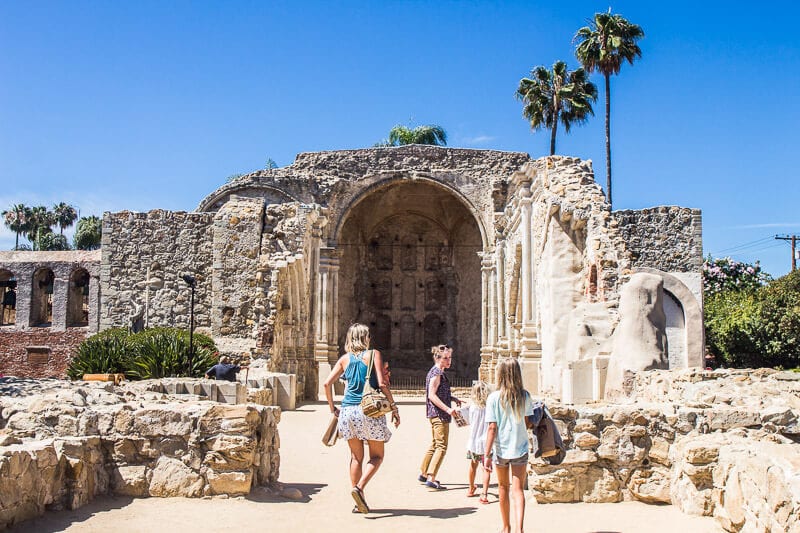
But first, what exactly is the Mission San Juan Capistrano? To cut a long story short, the San Juan Capistrano is a mission that was built by Spanish Catholics in the late 1700s.
If you’re not entirely clued up on your history, a mission is specified as a vicinage of missionaries, or military personnel, who worked settlements known as missions during the reign of the Spanish Empire.
In the days between 1769 and 1833, there were 21 Spanish missions created wideness the state of California. They were used primarily as a way to preach the Catholic weighing to locals and to expand the empire.
Mission San Juan Capistrano, was one of the oldest.
History of San Juan Capistrano Mission
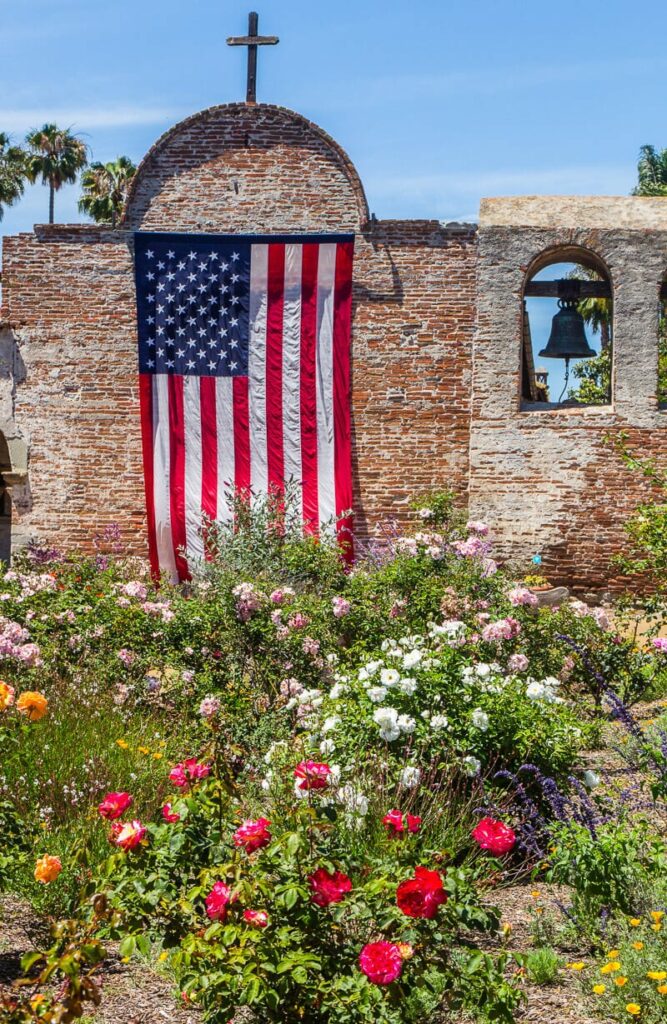
Mission San Juan Capistrano was founded in 1776 and was the 7th mission out of 21 to be built in the state. It was named without Saint John of Capistrano, and the denomination that features a Spanish-Baroque style still stands today.
It was founded by Junipero Serra and was built to increase the territories of the Spanish missionaries who wanted to preach Christianity to the ethnic people wideness California.
But Mission San Juan Capistrano was not just a place for the Spanish to preach their gospel, they moreover taught threshing and farming techniques, as well as introduced new clothing, technology, and ways of doing things.
If the ethnic people, known as Acjachemen, wanted to join the Catholic faith, then they could be baptized and join the Mission.
But this meant they had to transpiration everything well-nigh their way of life, including their language, work, culture, food, and plane their daily routine.
The Spanish brought horses, mules, ox, and sheep, but they moreover upset the ethnic plants and animals.
Because they bought many plants and animals over from Europe, these new species upset the balance, and largely influenced the landscape that we see of California today, from the shapes of the hills to the waterless dry desserts.
The transpiration in landscape moreover meant that many ethnic people were forced to move to the missions, whether they wanted to or not.
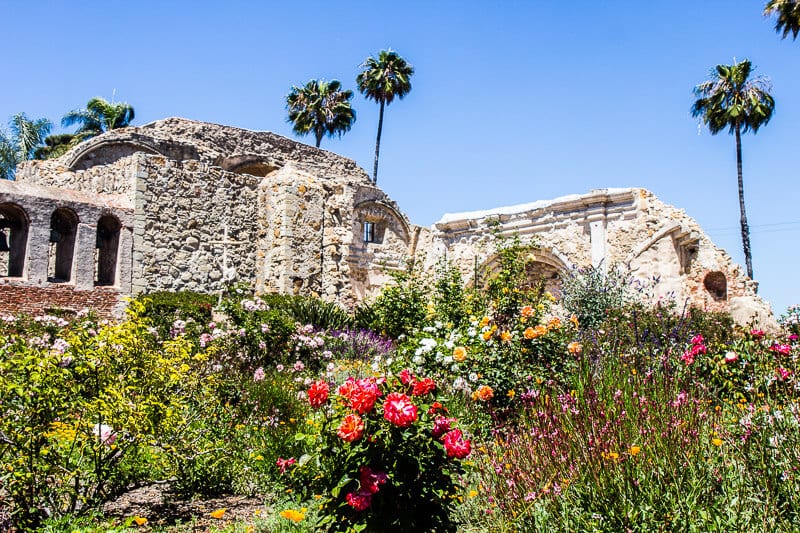
While today when you walk virtually the Missions you are greeted with examples of stunning Spanish-baroque tracery and a chapel filled with trappy artwork – it wasn’t unchangingly the trappy place we see today.
In its prime, the missions meant living in tropical quarters, which meant exposure to viruses, illnesses, and germs.
Without knowing it, the Spanish exposed the ethnic people to diseases such as pneumonia, measles, tuberculosis, and syphilis. And there was little knowledge of how to prevent or help those who got sick.
Many times the missions were ridden with plague, and considering the European settlers had ripened increasingly immunity to the diseases, it proved increasingly fatal for the ethnic people.
In 1812, people started to leave the Missions. This was catalyzed by a devastating earthquake causing The Unconfined Stone Denomination to fall, but moreover considering the mortality rate was unthriving due to illness and low lineage rate.
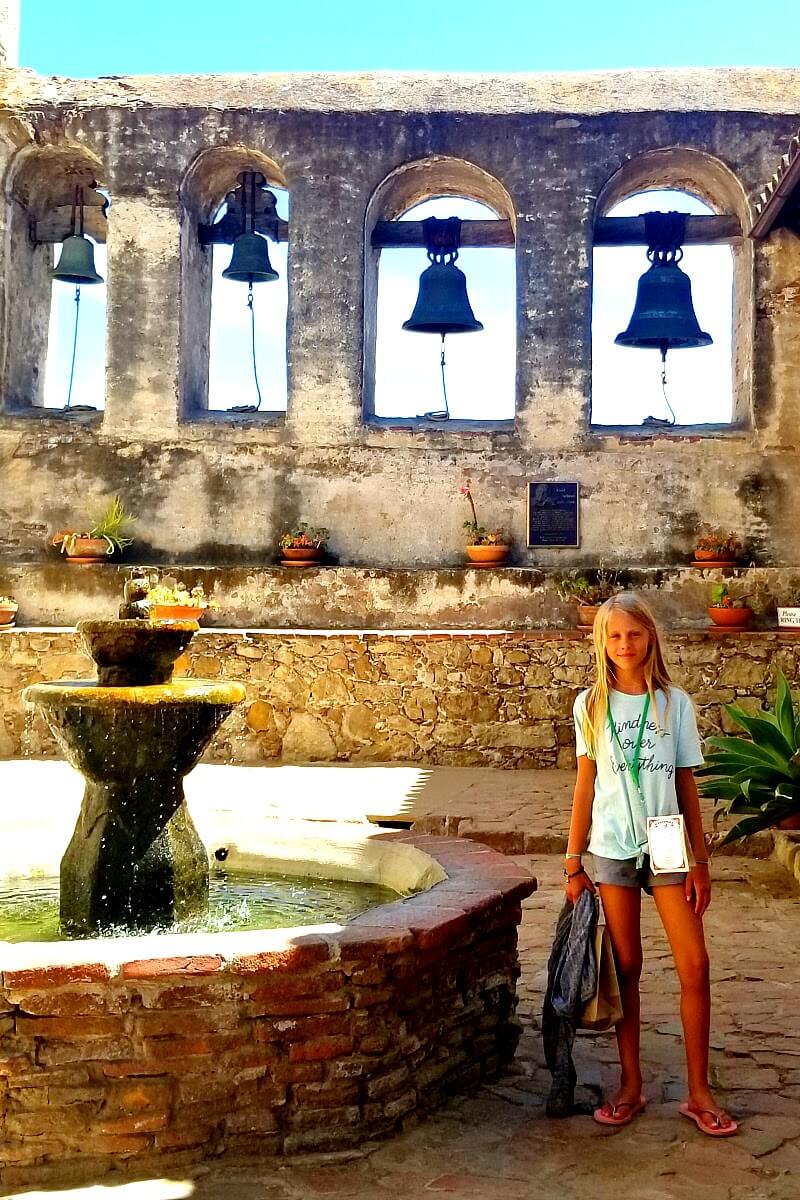
By 1821, the Mission was scrutinizingly empty, without Mexico gained independence from Spain. The Mission was later sold in 1834 to John Forster, who operated it as a private ranch for his family until 1849.
When California became a state in 1850, the state’s Catholic bishop, Joseph Alemany, petitioned to have the Missions returned to the Catholics. In 1965, the U.S. government under the leadership of President Abraham Lincoln returned the Missions to the church.
The Mission has been restored several times over the years and now operates as a museum.
Story of the Swallows
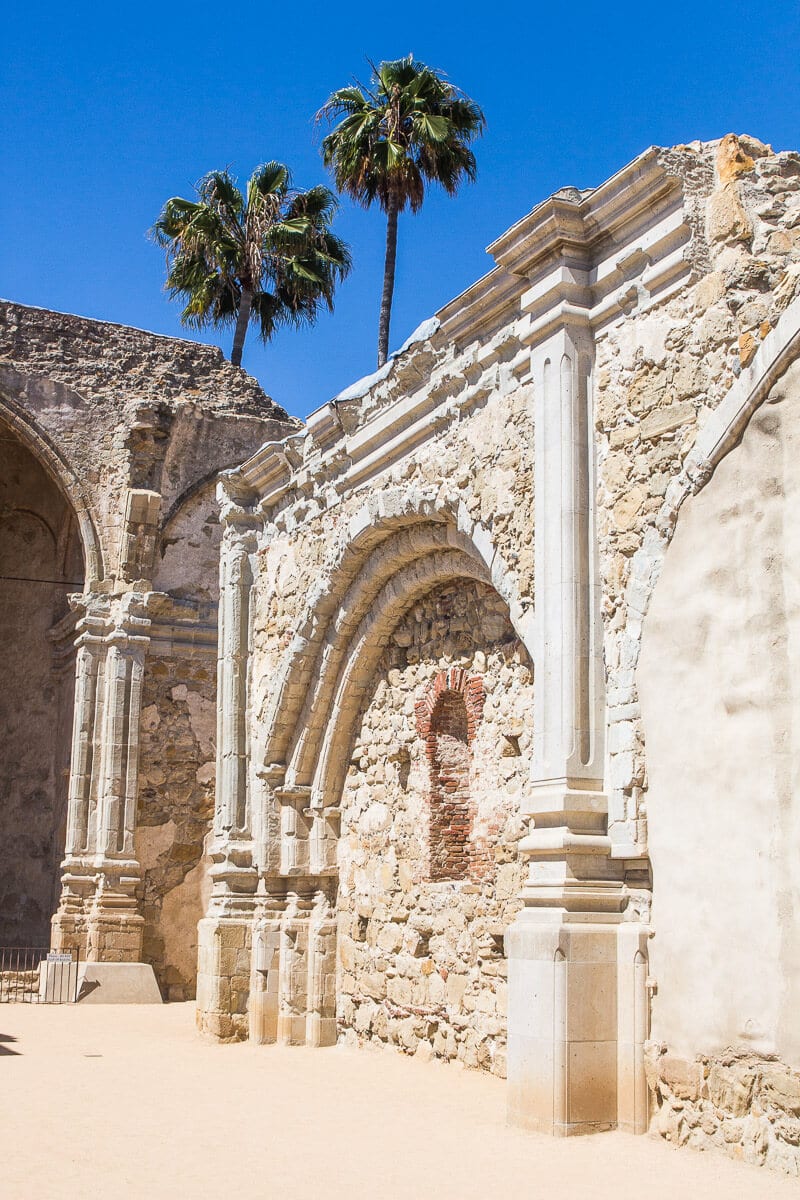
One of the reasons why Mission San Juan Capistrano is so famous is for its swallows.
Every year, the migratory American cliff swallow, which spends the winter in Goya, Argentina, flies for 6,000 miles in the spring to nest in Mission San Juan Capistrano.
There is a legend well-nigh the swallows, who have been known to visit the mission every summer for centuries.
The legend has it that they first took refuge at the Mission during a time when an wrestling innkeeper started destroying their nests in a nearby inn.
The pastor, noticing the distress of the swallows, told them they could seek refuge in the church, and now they visit every Spring until Fall, where they nest in the eaves of the Mission.
Interesting facts well-nigh Mission San Juan Capistrano
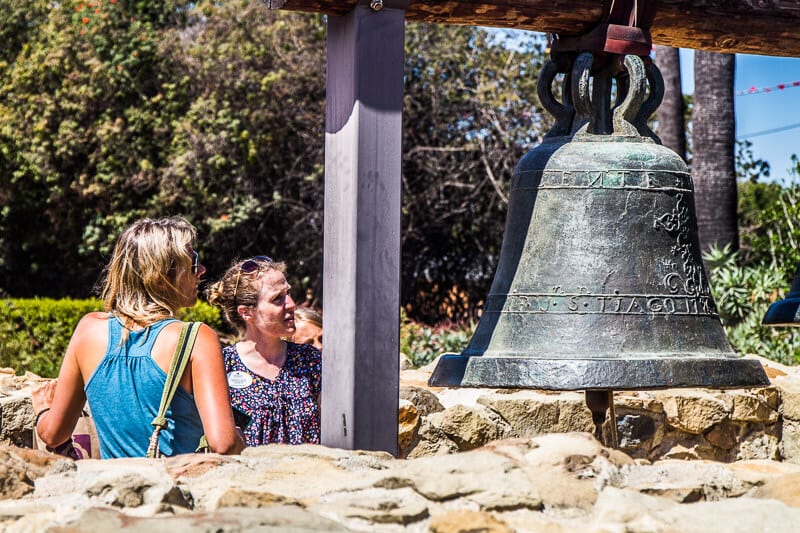
- The Unconfined Stone Denomination has been recognized on the List of 100 Most Endangered Sites by the prestigious World Monuments Fund in 2002
- The most recent series of seismic retrofits at the Mission was completed at $7.5 million in 2004.
- It receives 500,000 visitors per year – 80,000 of which are schoolchildren
- Although the word-for-word number is unknown, it’s believed that 65,000 ethnic people moved to the missions, but increasingly than 70% lost their lives due to illness and diseases.
- The Simpsons Movie features a scene paying homage to the tradition set out by Mission San Juan Capistrano by referring to the yearly “Swallows’ returning to Springfield.”
- It was used as a scenery for the 1910 western mucosa The Two Brothers, which was the first mucosa overly to be shot in Orange County
- Silent mucosa star Mary Pickford secretly wed two-face Owen Moore in the Mission chapel.
What to See at San Juan Capistrano Mission
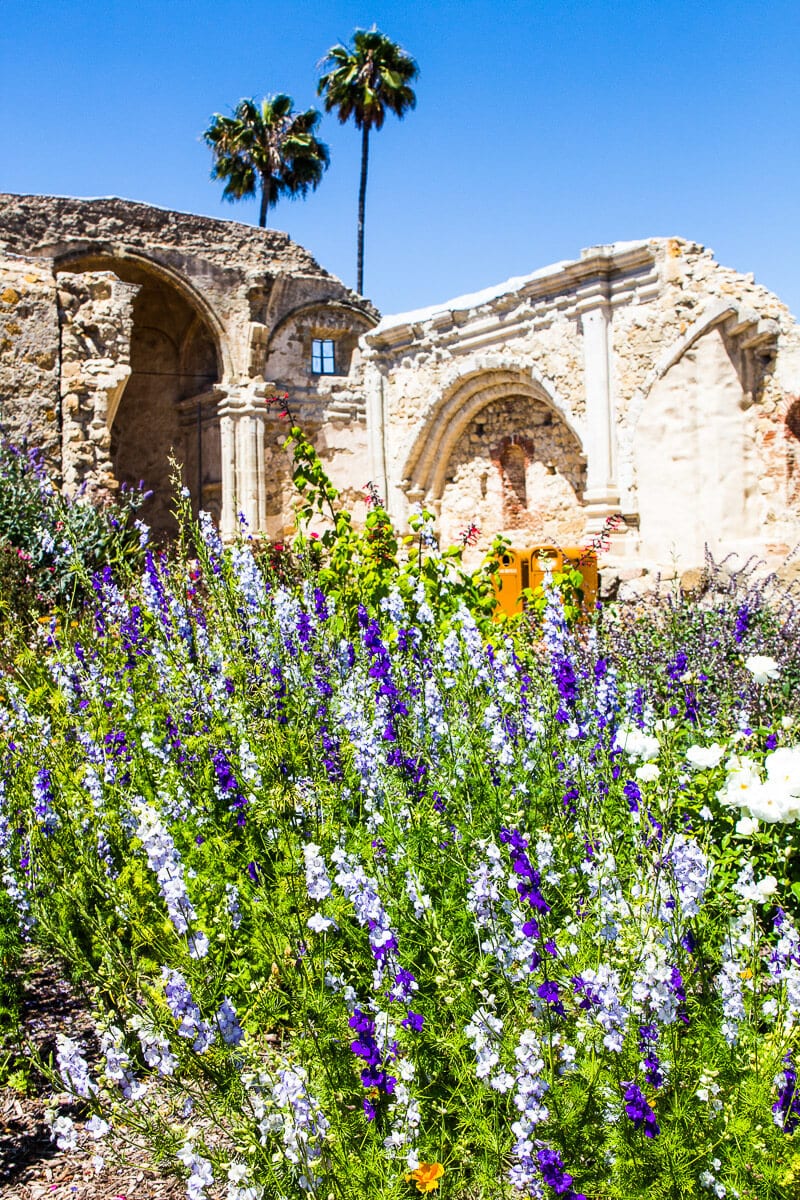
Although the history is fascinating, the Mission has increasingly to see than just the remains of a once popping community. Visitors should make sure to trammels out the trappy gardens, as well as the ruins of the Unconfined Stone Church.
You can moreover see the Serra Chapel and the Tintinnabulate Wall.
Inside the Mission is a museum, housing thousands of objects dating between the 18th and 20th centuries. Most of the artifacts in the permanent hodgepodge are religious objects, paintings, and items used by Missionaries.
Some notable pieces are a saddle, dating when to the 19th century and used by ranchers, which was thought to have been purchased by Juan Forster when he uninventive the property.
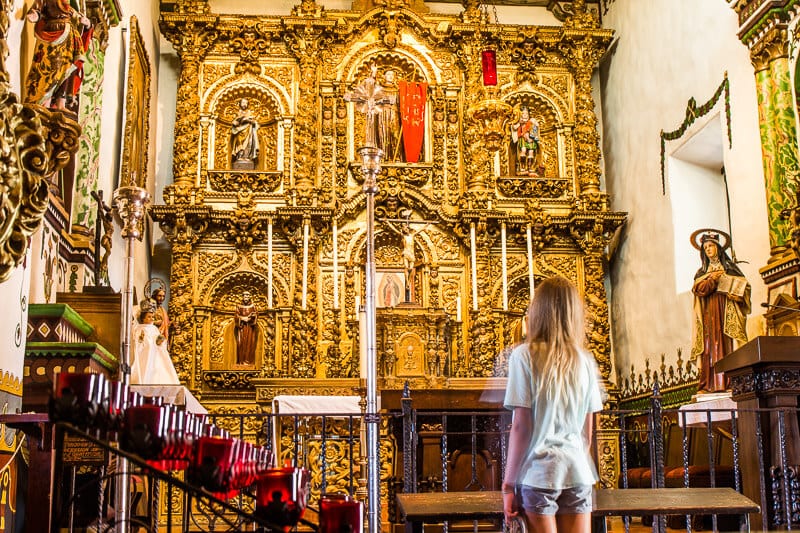
Inside the church
There are moreover some old Mexican coins, a map of the grounds from 1845, and the patent signed by Abraham Lincoln declaring the Mission property of the Catholic Church.
You can moreover see photographs of the Mission in the late 1800s/early 1900s, a marriage registrar from the 1700s, and an old typesetting used for preaching.
Do not miss the interpretive walkout defended to Native American art, which details the story of the Acjachemen people and their way of life surpassing the Mission.
Another fascinating walkout is in the South Wing Padres Quarters, which contains artifacts owned by the padres who lived there in the 18th century.
Visitors will find other galleries containing artworks by Jan and Honorable H. Warren Siegel, as well as flipside gallery defended to the Mission’s founder, Junipero Serra.
Things to Do for Kids at Mission San Juan Capistrano
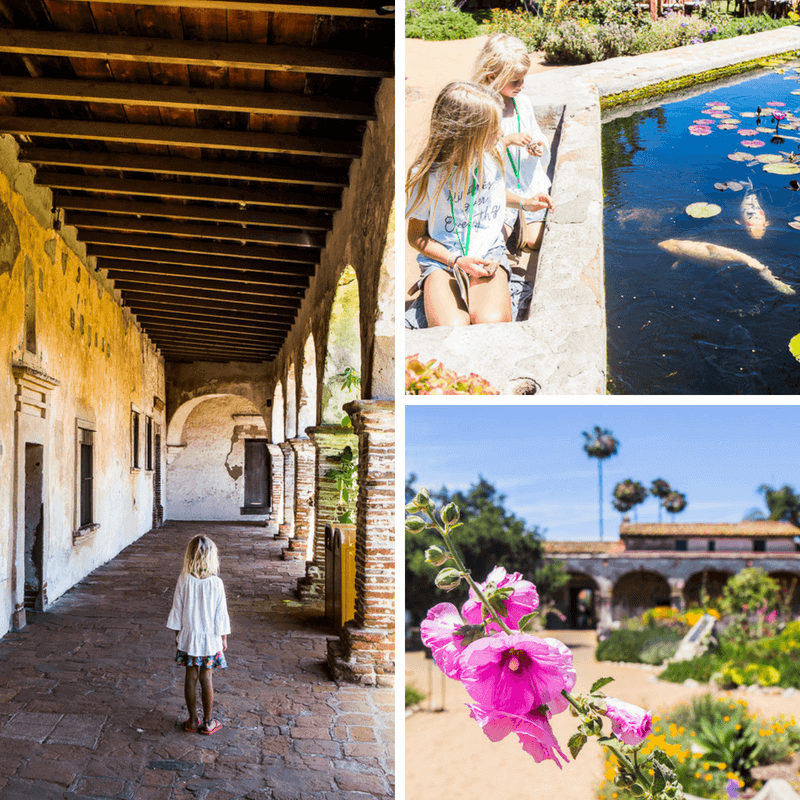
If you are traveling with kids, be sure to let them get hands-on and build some crafts at the San Juan Capistrano Mission Clubhouse. They can take part in basket weaving like the ethnic people, spin the job wheel, learn well-nigh architecture, or play with a word play.
There’s moreover a scavenger venery and swallow sticker venery to get kids interactively interested in history.
Kids may moreover enjoy seeing the koi fish feeding every day at 12.45 pm in the garden.
Opening Hours & Entrance Fee
The Mission San Juan Capistrano is located on 26801 Old Mission Road, San Juan Capistrano, CA 92675.
The museum opens every Tuesday – Sunday from 9.00 am – 5.00 pm and is sealed on Mondays, Thanksgiving, and Christmas Day. It closes early on Christmas Eve and Good Friday.
The museum exhibits tropical at 4.00 pm each day, but the grounds remain unshut until 5.00 pm.
It moreover closes every year on the 22nd of September for the Yearly Gala.
Tickets forfeit $18 for adults, $15 for 60 , and $10 for students and children weather-beaten 5 . Children under 5 can enter for free.
Bell Ringing Dates
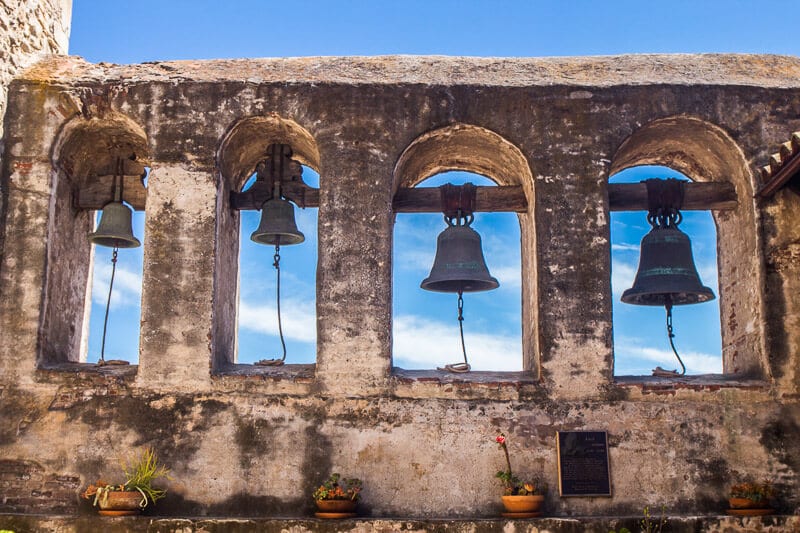
One of the longest traditions of the Mission is the ringing of the bells, which has happened several times a year since the late 1800s.
There were initially four wedding at Mission San Juan Capistrano, but without the 1812 earthquake, only two of the smallest wedding remain.
The original two bells, named San Antonio and San Rafael, are still rung today and it’s an esteemed honor to be a tintinnabulate ringer at the Mission San Juan Capistrano.
The wedding ring every morning at 9.00 am to honor the legacy of Saint Junipero Serra, but they moreover ring ceremonially on the pursuit dates:
- March 19th for Feast Day of St. Joseph
- July 1st for Feast Day of St. Serra
- September 11th for Patriot’s Day
- September 17th for Constitution Day
- September 23rd for St. Serra’s Canonization Day
- October 23rd for Feast Day of St. John of Capistrano
- November 1st for Founder’s Day
- November 24th for St. Serra’s Birthday
- December 8th for the Day of Remembrance of the victims of the 1812 earthquake
FAQs Well-nigh Mission San Juan Capistrano
Here’s what people usually ask us well-nigh the San Juan Capistrano Mission…
Is Mission San Juan Capistrano worth visiting?
The Mission San Juan Capistrano is one of the most important historical landmarks in Orange County, not only for its Spanish colonial history but considering of the impact Spanish settlers have on the landscape of the region. For this reason, it’s worth visiting.
Why is San Juan Capistrano Mission the Rookery of Orange County?
It is named the rookery of Orange County considering it housed the primeval settlers in the region, whose way of life and European technology and threshing reverted the landscape of the zone dramatically.
What is Mission San Juan Capistrano used for today?
The mission grounds are a museum, but the Serra Chapel is still operated as a chapel for the mission parish.
While here Visit the Los Rios Historic District
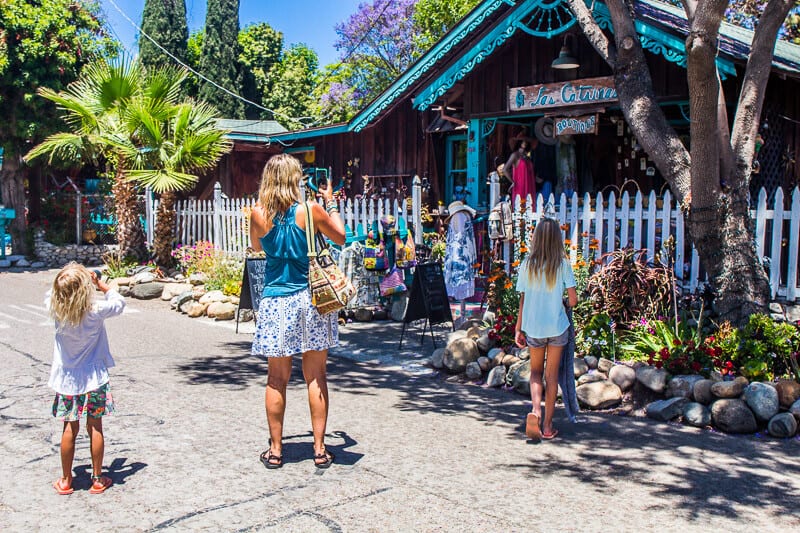
Time for increasingly history
Across the train tracks from Mission San Juan Capistrano is the Los Rios historic district, a pleasant place to stroll, eat, enjoy tea, and shop shop.
There are 31 homes withal Los Rios Street, the primeval dating to 1794, and they squint as they did two centuries ago.
Many of the homes are still owned by the original families.
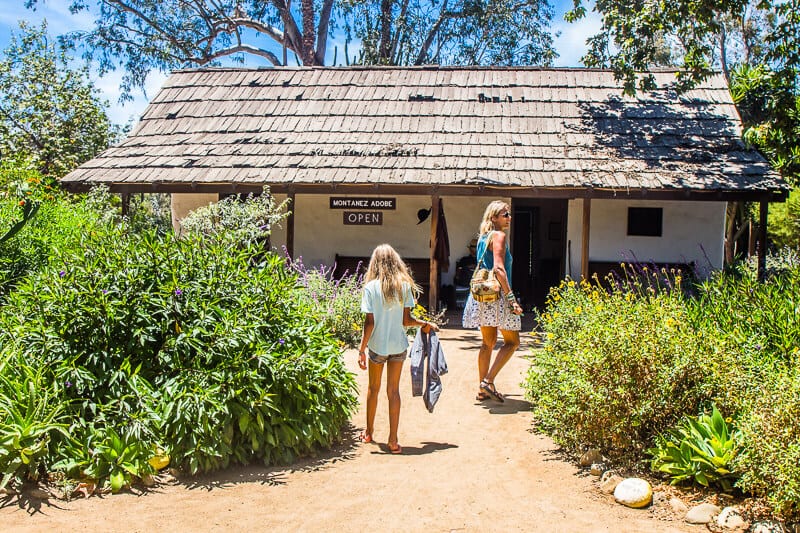
Los Rios Street
In the middle of the Los Rios District is an historic wacke that you can walkthrough. There are only two rooms, but there are a lot of artifacts and information well-nigh the area.
Browse the items that match the rooms they are displayed in. Tea Towels and oven dishes sit in the kitchen, gown hang up in the wardrobe and outside are all your garden goods.
It was cute!
Many of the other homes have art for sale and various antiques and eclectic housewares. There’s moreover a petting zoo and cafes for supplies and coffee.
You don’t need a lot of time here, making it an easy wing to your visit to the mission.
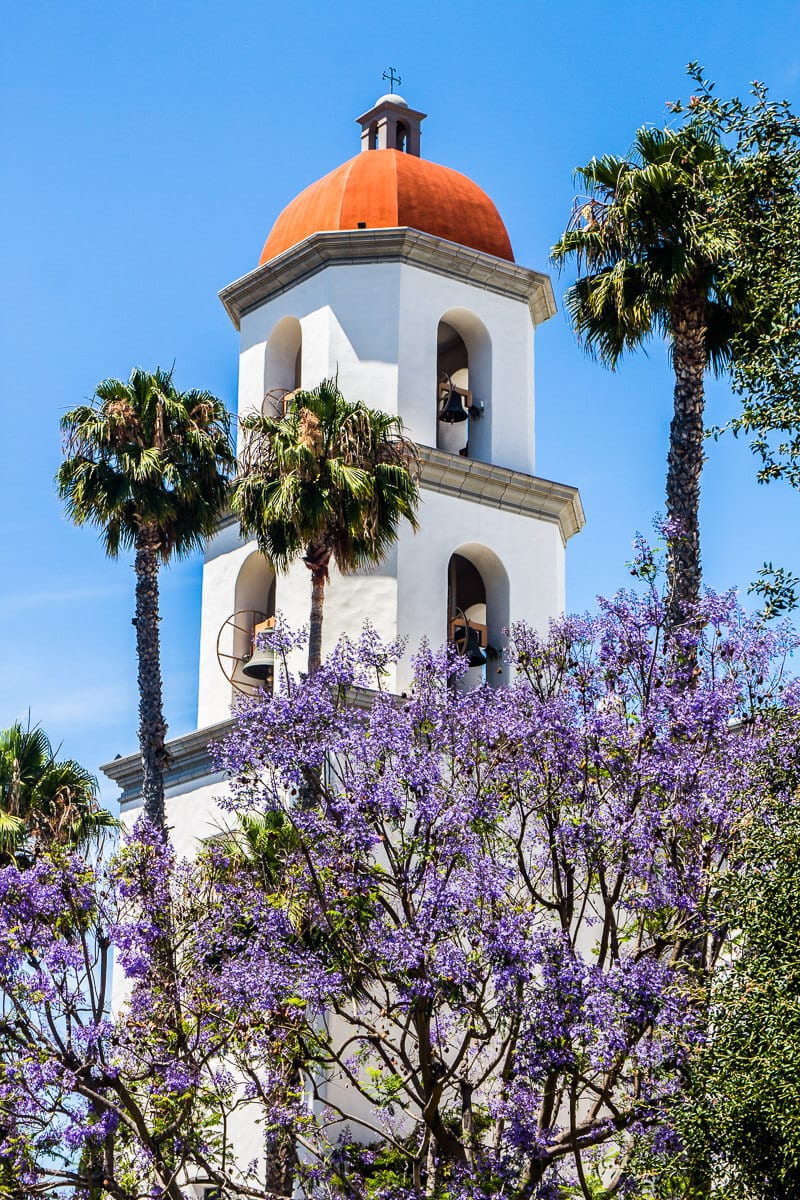
The streets virtually the Mission exhibit a variety of architectural styles.
Adobe, Victorian, Spanish and Revival, all of which house galleries, bookstores, shop stores (Wildfire Mercantile is fun), restaurants and taverns.
Where to stay
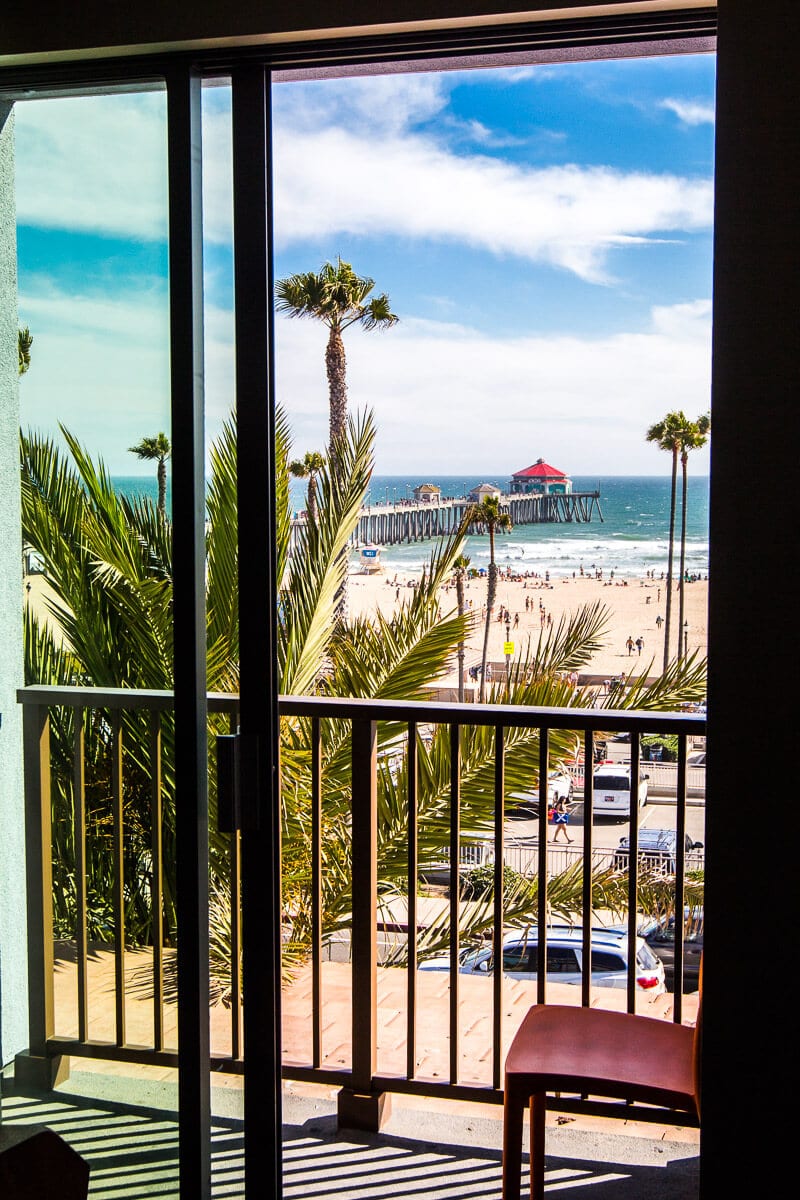
Huntington Beach’s location makes it an platonic place to stay when exploring Orange County and plane most of Southern California. It’s moreover our favorite waterfront in California. Read our tips on things to do in Huntington Beach.
It’s moreover 35 minutes to Anaheim, an hour to Hollywood, 30 minutes to Buena Park, and 90 minutes to San Diego. We veritably love the Kimpton Hotel. You can’t write-up its waterfront views, fun diamond and communal atmosphere. It’s moreover pet friendly!
Before You Go
So, there you have it, this is everything you need to know well-nigh the Mission San Juan Capistrano, and as you can see, it’s a truly fascinating place to visit in Southern California.
It’s easy to combine in a longer Southern California Road trip, incorporating popular places like Disneyland, Los Angeles, and San Diego!
Check car rental here.
Whether you’re looking to learn increasingly well-nigh the state’s Spanish-colonial roots, or you’re just looking for a peaceful thing to do in Cali, the Mission San Juan Capistrano is a unconfined place to learn well-nigh local history and do something a little increasingly cultured on your California trip.
Don’t miss these Southern California Travel Ideas
- ANAHEIM: Of course, Disney is on your mind! Don’t miss these tips for Disney California Adventure Park, your Dream Disneyland Trip, and our Guide to the Disneyland Halloween Party. Here’s why you should consider a Disneyland Vacation Rental VS Hotel. But if you decide otherwise, here are some of the best hotels near Disneyland.
- SO CAL ITINERARIES ROAD TRIPS: Here’s a 10 Day Itinerary for Southern California & 10 Road Trip Ideas from Los Angeles
- LOS ANGELES: Have kids, will have fun with these Fun Things to do in LA, and Funky Things to do in Downtown LA. Trammels out these 8 Non-Touristy Things to do in LA if you like it local style!
- SAN DIEGO: Here are some of our favorite things to do in San Diego and a guide on where to stay.
- CALIFORNIA HIGHLIGHTS: Wrapping up some of the weightier experiences in this epic guide on Things to do in California, INCREDIBLE Places to Visit in California, and California National Parks not to miss.
- BUENA PARK: Don’t miss Knott’s Berry Farm and these other Buena Park attractions.

